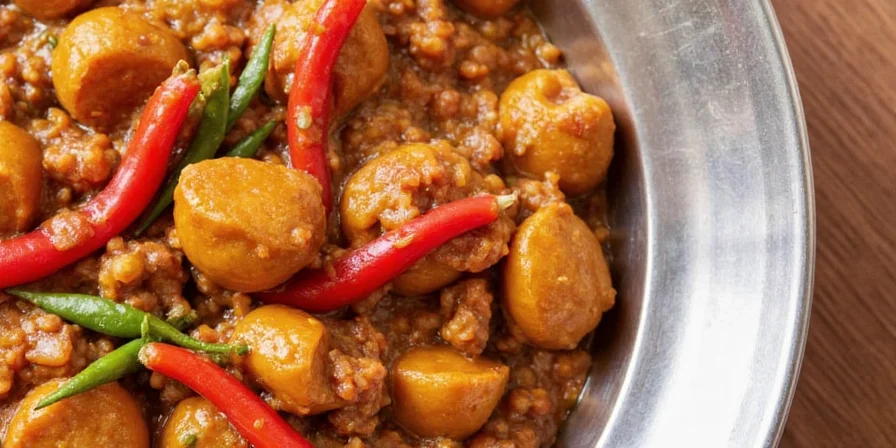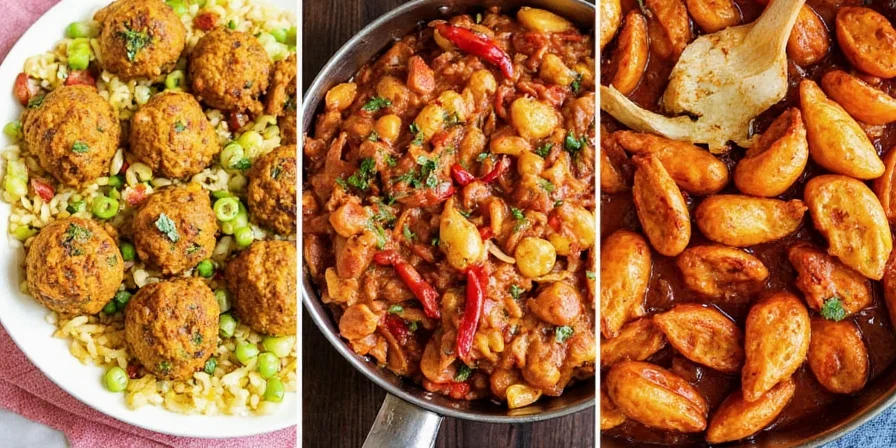10 Spicy Secrets Behind India’s Flavor-Packed Dishes You Can’t Ignore!
If you’ve ever bitten into a piping hot samosa and wondered, “How does one bite contain so much flavor?”—you’re not alone. Indian food is like the fireworks of the culinary world: colorful, bold, and full of surprises. From buttery curries to tangy chaats, each dish tells a story of tradition, culture, and a whole lot of spice.
In this blog post, we’ll take you on a whirlwind tour of Indian foods, uncovering their global spice roots, hidden flavor bombs, and some pro tips for spicing up your kitchen game. Buckle up—it’s going to be a spicy ride!
Table of Contents
- 1. What Makes Indian Food So Unique?
- 2. The Spice Rack of India: Key Ingredients That Define the Cuisine
- 3. Must-Try Indian Dishes: A Flavor Tour from North to South
- 4. Cooking Like an Indian Pro: Tips, Tricks & Hacks
- 5. Pairings That Pop: Sides, Breads & Beverages That Complete the Meal
- 6. Global Influence: How Indian Flavors Have Conquered the World
- 7. FAQ: Your Burning Questions About Indian Food Answered
1. What Makes Indian Food So Unique?
Indian cuisine isn't just about spice—it's about balance. Sweet, salty, sour, bitter, and umami all play a role in every bite. But what really sets it apart is its use of spices not just for heat, but for depth, aroma, and health benefits.
- Diversity: Each region in India has its own culinary style—from creamy Punjabi dishes to coconut-laden Kerala curries.
- Layered Flavors: Indian cooking often builds flavors in stages, starting with tempering spices (tadka), then layering aromatics like onions, garlic, and ginger.
- Versatility: Vegetarian options abound, making it perfect for modern flexitarian diets.

2. The Spice Rack of India: Key Ingredients That Define the Cuisine
Spices are the soul of Indian food. Let’s break down the holy grail of the Indian pantry and what makes them indispensable:
| Spice | Flavor Profile | Common Use | Health Perk |
|---|---|---|---|
| Cumin (Jeera) | Toasty, nutty, slightly earthy | Tadka in curries, rice dishes, soups | Aids digestion |
| Turmeric (Haldi) | Earthy, peppery, vibrant yellow | Masalas, golden milk, pickles | Potent anti-inflammatory |
| Coriander (Dhania) | Citrusy, floral, warm | Curry powders, chutneys, marinades | Antioxidant-rich |
| Cardamom (Elaichi) | Fragrant, sweet, herbal | Sweets, chai, biryanis | Great for oral health |
| Garam Masala | Warm, aromatic blend | Added at end for depth | Boosts metabolism |
3. Must-Try Indian Dishes: A Flavor Tour from North to South
Ready to explore the subcontinent through your taste buds? Here’s a flavor map of must-try dishes from across India:
- North India: Think butter chicken, tandoori roti, dal makhani
- South India: Savor dosa, idli, sambar, and fiery fish curry
- West India: Try pav bhaji, vada pav, and Konkan seafood
- East India: Bengali delights like macher jhol (fish curry) and rasgulla
| Dish | Region | Main Ingredients | Why It’s Famous |
|---|---|---|---|
| Butter Chicken | Delhi/North | Tandoori chicken in creamy tomato sauce | Creamy, rich, perfect with naan |
| Dosa | Tamil Nadu/South | Rice and urad dal batter fermented overnight | Crispy crepe served with chutney and sambar |
| Biryani | Hyderabad/Central | Layered rice, meat, saffron, fried onions | One-pot meal bursting with flavor |
| Pav Bhaji | Mumbai/West | Spiced veggie mash served with buttery buns | Street food legend, quick and satisfying |
| Rogan Josh | Kashmir/North | Slow-cooked lamb in deep red Kashmiri chili sauce | Lamb melts in mouth, infused with warming spices |

4. Cooking Like an Indian Pro: Tips, Tricks & Hacks
You don’t need a PhD in spiceology to cook great Indian food. Here are some pro moves that can turn your kitchen into a masala magic factory:
- Freshly Ground Spices: Whole spices retain flavor longer. Grind small batches as needed.
- The Tadka Trick: Heat oil, add mustard seeds, cumin, curry leaves, etc., and let them pop before adding to the dish.
- Temper Temperatures: Don’t rush frying onions or garlic—they build the base of flavor.
- Use Ghee: Adds richness and helps release fat-soluble flavors from spices.
- Balance Is Key: Add a splash of lemon juice or vinegar to cut through heaviness. A touch of sugar balances heat.
- Rest Curries: Many Indian dishes taste better the next day—the flavors meld beautifully.
5. Pairings That Pop: Sides, Breads & Beverages That Complete the Meal
No Indian feast is complete without the right sides and drinks. Here’s how to round out your plate:
- Flatbreads: Naan, roti, paratha, and poori soak up sauces like flavor sponges.
- Yogurt-Based Sides: Raita or dahi brings coolness to fiery dishes.
- Chutneys: Mint, tamarind, or coconut chutney add brightness and contrast.
- Drinks: Masala chai, lassi, jaljeera, or nimbu pani (lemon water) cleanse the palate.
6. Global Influence: How Indian Flavors Have Conquered the World
From London to Toronto to Sydney, Indian food has made its mark globally. Why?
- Adaptability: Dishes like tikka masala have been reimagined to suit local tastes while keeping their Indian essence.
- Vegetarian Appeal: As plant-based diets grow, Indian vegetarian dishes offer variety and flavor.
- Comfort Food Factor: Rich gravies and comforting lentils feel like a hug in a bowl.
- Street Food Swagger: Chaat, samosas, and pakoras make perfect grab-and-go snacks.
7. FAQ: Your Burning Questions About Indian Food Answered
We get it—you’ve got questions. Here are answers to the most commonly asked ones:
- Q: Is all Indian food spicy?
- A: No! While heat is common, it’s adjustable. Many dishes are mild and focus on aromatic complexity.
- Q: What’s the difference between garam masala and curry powder?
- A: Garam masala is warm and fragrant; curry powder often includes turmeric and is more earthy. Not interchangeable!
- Q: Are there gluten-free Indian dishes?
- A: Absolutely! Rice-based dishes like dosa, upma, and many curries are naturally gluten-free.
- Q: Can I meal prep Indian food?
- A: Definitely! Most curries taste better the next day. Store in airtight containers for up to 4 days or freeze for months.
- Q: Why do Indian recipes have so many steps?
- A: Layers create depth. Each step—from blooming spices to slow simmering—builds flavor brick by brick.
Conclusion
Indian food isn’t just a cuisine—it’s a celebration of culture, history, and the universal joy of eating together. Whether you're a seasoned spice hunter or a curious newbie, there’s always something new to discover in the vast, vibrant world of Indian dishes.
Now that you’ve unlocked the secrets behind those irresistible flavors, why not try your hand at making a basic curry or fermenting your own dosa batter? With the right spices, patience, and a pinch of love, you too can bring the magic of India to your table.
Stay spicy, friends.










 浙公网安备
33010002000092号
浙公网安备
33010002000092号 浙B2-20120091-4
浙B2-20120091-4